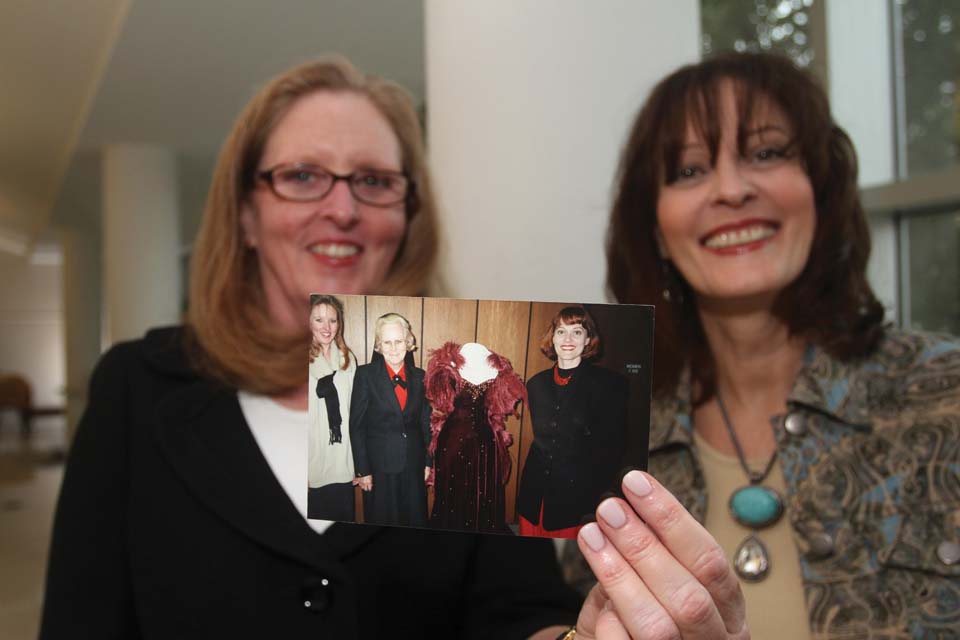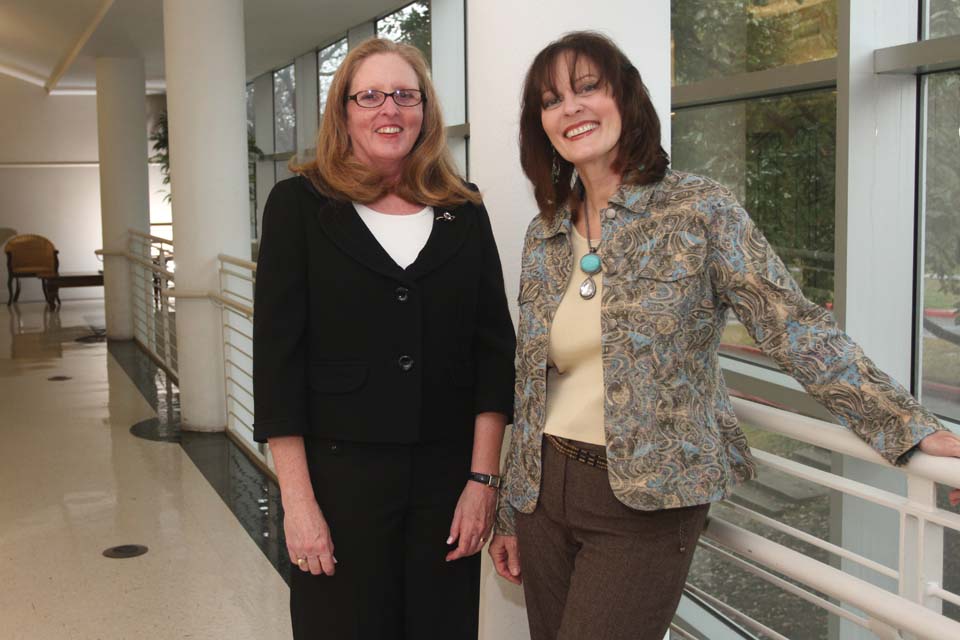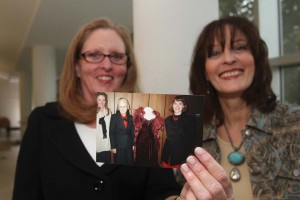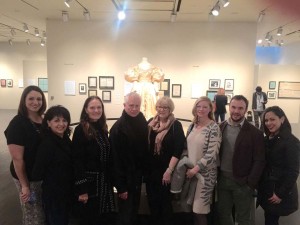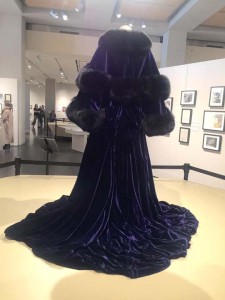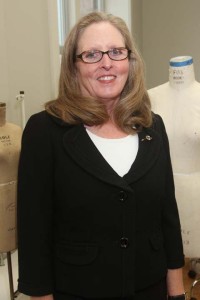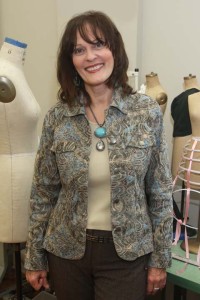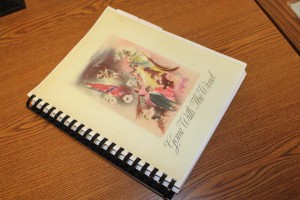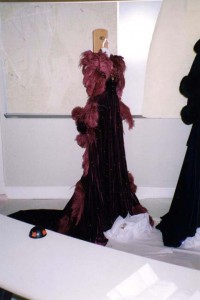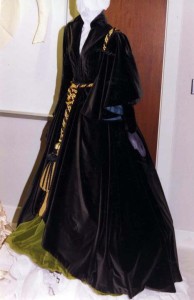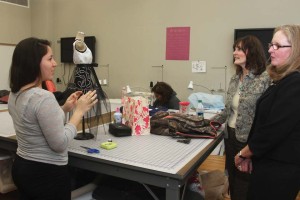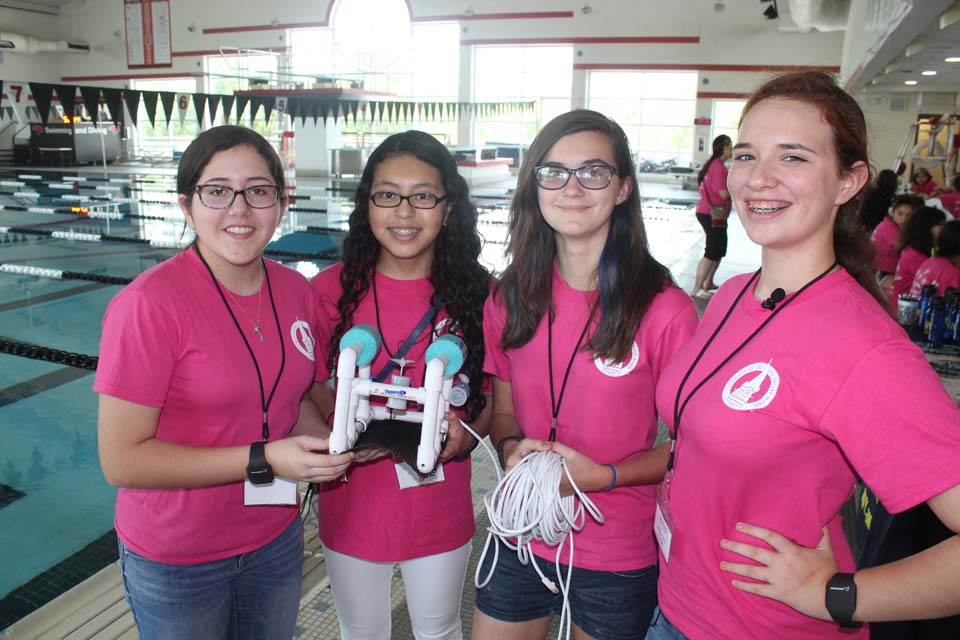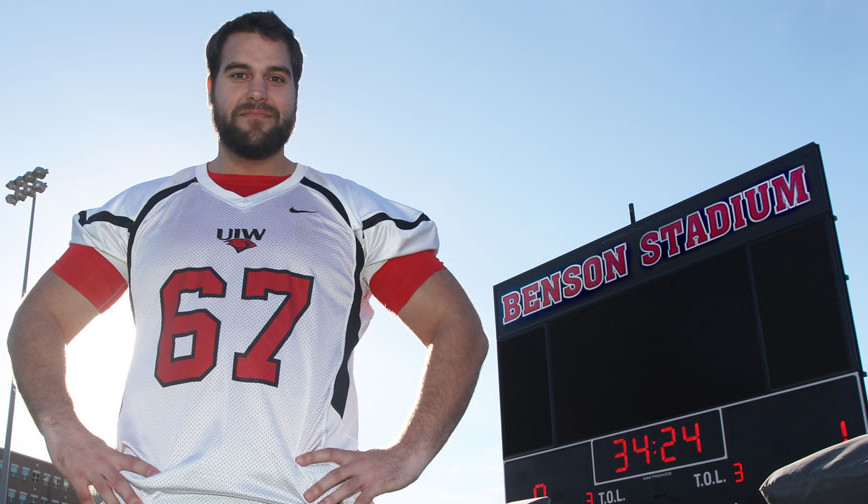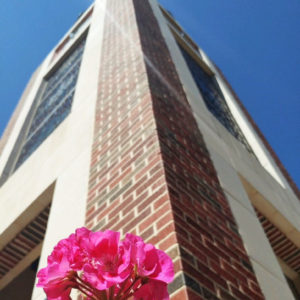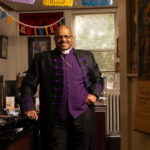By Ashley Festa
Intricate. Delicate. Precise. That’s the status quo for every University of the Incarnate Word fashion design student. But two of them discovered just how painstakingly complicated some needlework projects could be.
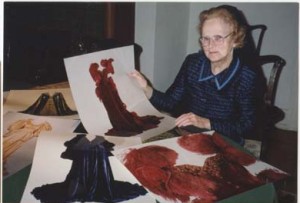
Sr. Joyce reviews photos of the actual gowns worn in “Gone with the Wind.” She had the photos enlarged for reference.
Alumna Carrie Harrell ’89 BA and former student Jan Hevenor Boyle spent nearly 900 hours measuring, planning, cutting and sewing—not to mention searching for fabric, ostrich plumes, rhinestones and other details—to reproduce exact replicas of four gowns worn by Scarlett O’Hara in “Gone with the Wind.” The dresses were recently on display together for the first time in more than 20 years at the “The Making of ‘Gone With The Wind’” exhibit at the University of Texas at Austin’s Harry Ransom Center.
Ever since the 1939 classic was produced, museums around the country frequently borrowed the original dresses from the Ransom Center’s David O. Selznick archive for exhibits. Over time, the fragile gowns deteriorated. To preserve the originals while still sharing the masterpieces with the public, the then Incarnate Word College students were commissioned to recreate history.
Harrell and Boyle were already experienced seamstresses. So when the Center sought someone in 1986 to reconstruct the gowns, the late Sr. Mary Elizabeth Joyce, CCVI, then-director of the Fashion Design program, recommended the two women for the job.
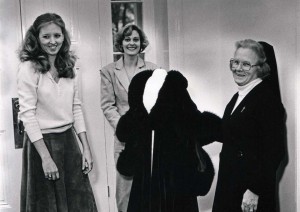
(Pictured L-R) Boyle, Harrell and Sr. Joyce pose with one of the gowns in 1986. Photo courtesy of the Sisters of Charity of the Incarnate Word Archives.
The project was stressful, and expectations were high. Both women were full-time students; Harrell was a single mother. And the dresses themselves—Scarlett’s green velvet curtain dress, wedding dress, blue velvet wrapper and burgundy silk velvet gown—they were a test of endurance.
To get their first glimpse of the gowns, Harrell and Boyle headed to Austin in January 1986 to take a look at what they’d be working with. Harrell snipped tiny swatches of fabric from underneath the dresses to take to New York City fabric stores in hopes of getting a match. Once in New York, they visited store after store after store, searching for the right materials.
“We looked for fabric with the right color, weight and fiber content,” Harrell said. “We had to make exact duplicates of these outfits all the way down to the underpinnings.”
That included recreating each dress’s buttons, which were no longer in production—not in New York or anywhere. So they had to improvise a way to make the buttons by hand, hundreds of them.
Plus 500 rhinestones, which needed precise placement on the red velvet dress.
And 120 leaves on Scarlett’s wedding dress, which required five-points of meticulous measurement to ensure they were in exactly the correct position.
“To get one little measurement, I had to measure from the bottom and top and side seam and from point to point for every single leaf,” Harrell said. “I had it over my knee, and I was crying. It was a great test in patience. Nothing has compared as a lesson in patience since then.”
Well, except maybe when they had to take the green velvet curtain dress apart because one side was a half-inch off from the original.
Normally, a seamstress would measure only one side of a garment to make a pattern, naturally assuming it to be symmetrical. The designers of the original costumes, however, had made adjustments on the fly so the dress would fit better on actress Vivien Leigh, who played Scarlett. That resulted in an asymmetrical dress and two exasperated Incarnate Word students.
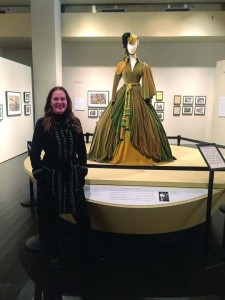
Harrell stands next to the original green velvet curtain dress at the exhibit recently held in Austin for the 75th anniversary of “Gone with the Wind.”
Despite the frustration, that dress was Boyle’s favorite to work on. “It’s the symbol of the movie, of Scarlett’s will to survive,” she said. “Working on it was like touching history.”
A year and a half and almost $30,000 later, the four dresses were complete—except one final, nearly imperceptible detail.
“We put our names on tiny ribbons and sewed them way up into the dresses,” Harrell said. “Maybe someone will find them one day.”
In January, almost 30 years later, both Harrell and Boyle visited the exhibition in Austin where two of their dresses, the wedding dress and the blue velvet wrapper, were displayed. The other dresses in the exhibit were the restored originals.
“It was a step back in time,” Boyle said. “This project was one of the highlights of my life.”
Harrell echoed that sentiment.
“As a young girl, my dad took me to that movie, the first movie I’d ever seen in a theater” she said. “Now, every time I see it, I think, ‘Oh, I held that dress!’ It was just amazing.”
For more info on the “The Making of ‘Gone With The Wind'” exhibit, visit http://www.hrc.utexas.edu/exhibitions/web/gonewiththewind/
- Harrell pictured with fashion group members, including UIW’s Senior Instructor of Fahsion Management Teri Lopez (second from left) at the exhibit recently held in Austin for the 75th anniversary of GWTW.
- The blue velvet wrapper on display at the recent exhibit in Austin.
- Jan Hevenor Boyle
- Carrie Harrell
- A journal in UIW’s archives of the replication project for the GWTW gowns.
- Joyce, Boyle and Harrell pose with one of the GWTW gowns. Photo courtesy of the Sisters of Charity of the Incarnate Word Archives.
- The replicated burgundy silk velevet gown. Photo courtesy of the Sisters of Charity of the Incarnate Word Archives.
- One of the GWTW replica gowns. Photo courtesy of the Sisters of Charity of the Incarnate Word Archives.
- Harrell and Boyle visit with current UIW fashion student Jazmin Cerritos in the Joyce Building on campus.

